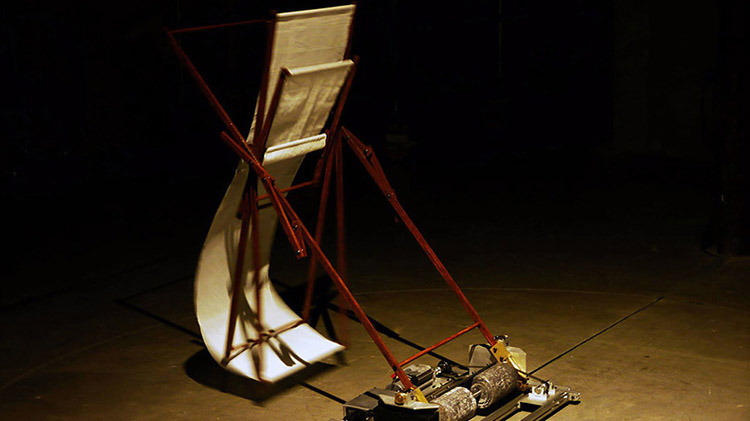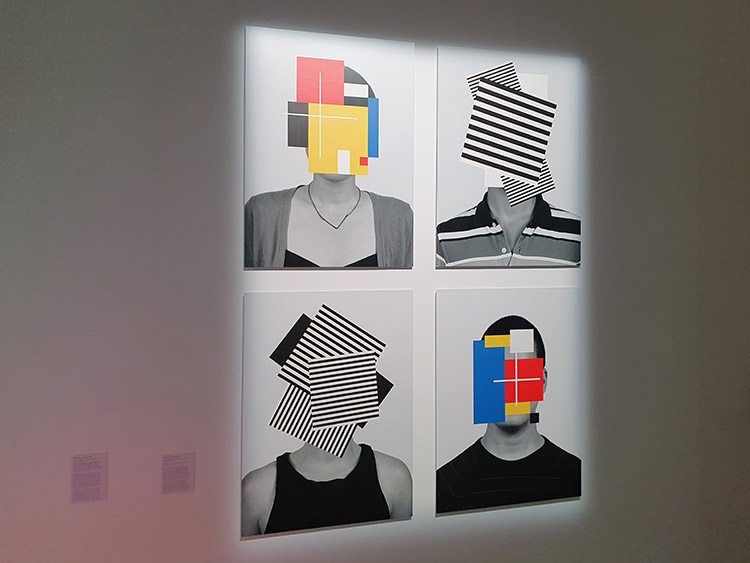Dominique Moulon on his current exhibition “Human Learning”
Your upcoming exhibition called “Human Learning”, reflects on the reciprocity of knowledge between humans and technology, what are your personal thoughts on this matter?
Artificial intelligence emerged during the fifties, machine learning during the eighties. Nowadays we are talking about deep learning, meaning the machines are fed with data to learn by themselves. We have taught everything to the machines, from computing to data processing and learning. Isn’t it our time to think about what machines could teach us? The idea of this exhibition is to reverse and to talk about Human Learning.
Today, we live in a world that is designed by technology, by the engineers, by the GAFA, by Google, Apple, Facebook, Amazon, Microsoft and so on… So the best way to understand our current society is to look at artwork using digital technology. For a long time, artists have been interested in the aesthetics of the machines. Art can be made by perfectly processing data while the failure of the machine can also be taken in consideration. And if there is a world where failure is still possible, this is a world of art! This exhibition is a portrait of the world we live in through the result of multiple collaborations between humans and machines.

Human Learning Exhibition
As a curator, you seem to be continuously interested by our current digital world and its outcome on our society. Is this interest inspired by fear or by admiration?
I don’t fear technology, in my opinion, those who would like us to be afraid by this evolution are wrong. However, it forces us to reconsider our relation to the machines. This digital revolution made us rethink what we could do that the machines could not. But if there is something that might never, ever, be replaced by machines is creativity.
I am more fascinated by this world that is continuously evolving thanks to the use of machines, digital and code. It is essential to look at these evolutions through the perspective of human sciences. Even though I understand what you mean by fear, I have always been fascinated by machines, I appreciate the imagination that they trigger in literature, cinema and so on…

Could you explain the creative process you have experienced when curating this upcoming exhibition?
It depends on many issues : of course the budget, place, context and duration is important. There are many aspects that influence the way to curate. In this specific context, We were thinking about diversity, establishing some kind of relation between artwork coming from Canada and others from France. Then, the choice in staging the artwork is also important; we tried to establish some possible links between works of art that had never been exhibited together. One of the goals of the curator is to facilitate or establish a dialogue between different artwork.

Human Learning Exhibition
What would you like to achieve when you exhibit artists?
A curator creates nothing except a title and a text. The real value is gathering and delivering some possible meanings. Curating is, in itself an achievement; you feel uplifted thanks to the artworks you share.
What I really appreciate in my work is that it will continue to live on its own; the public will take it and will appropriate it. The day of the opening, your are in a sense handing you art to the viewer. Marcel Duchamp was very interested in the idea of the viewer. Curating comes from the latin ‘curare’, taking care of. I will definitely try to take care of the artists, the people who work with me and the artwork itself.
You think of technology as a material. In fact, you are interested in the aspect of randomness that a machine can offer to art. If we push your idea further, could we say that machines have also become artists?
In a certain way I would say yes but not totally autonomously, because a machine alone is nothing. A machine with an expert, an artist, a coder or both, can be very valuable in the field of art. But when a coding artist creates a software that does not work exactly as he or she planned, it can also be very interesting. Randomness is one of the major parts of art; I also value serendipity. Who would John Cage (John Milton Cage, Jr.) be without randomness?
I appreciate when artists give the machine autonomy; the machine can continue to process art not exactly how the artist coded it, and that to me is fascinating.

Time, history and staging Exhibition
If technology didn’t exist during your time, what material, subject or inspiration would have brought you to art?
I could have focused on other emerging mediums, practices. The idea of emergence is what pushes me to write and curate. I’m really interested in the medium, in the technique. Art is also a matter of technique, whether it is with oil paint, sound, cinema or data. And artists are at the best place to witness their current society. By accompanying them, I want to give my interpretation of the world I live in.

What made you want to transmit your experience to students?
They might not know it, but students teach me a lot, and the reciprocity of knowledge that we maintain makes us stronger. It is a matter of relation in the context of art. Also, writing, curating, giving talks and teaching are all linked to one another. They are not separate pieces of my life; one helps me with another, which is great.
Finally, what is your definition of art?
Art has always been connected to the world we live in, to society, to social issues. Art can help us to have a better understanding of ourselves, others and the world that surrounds us. Art can and must help us see things from another perspective, to push us to continuously rethink. Because certainty is a danger.
Dominque Moulon’s current exhibit at the Centre Culturel Canada in Paris runs from 5 February through 17 April 2020, Monday – Friday from 10am to 6pm.
